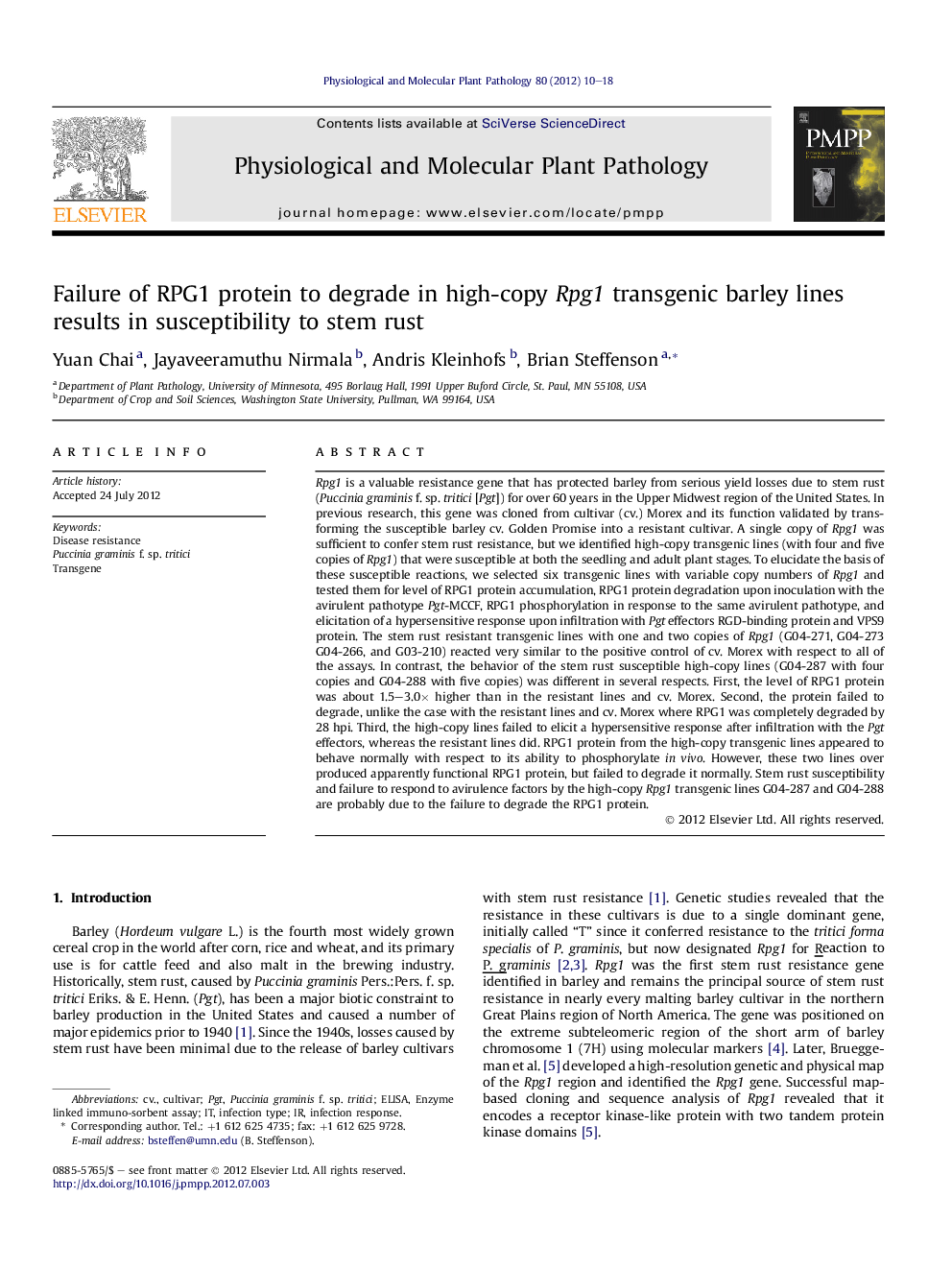| Article ID | Journal | Published Year | Pages | File Type |
|---|---|---|---|---|
| 2836327 | Physiological and Molecular Plant Pathology | 2012 | 9 Pages |
Rpg1 is a valuable resistance gene that has protected barley from serious yield losses due to stem rust (Puccinia graminis f. sp. tritici [Pgt]) for over 60 years in the Upper Midwest region of the United States. In previous research, this gene was cloned from cultivar (cv.) Morex and its function validated by transforming the susceptible barley cv. Golden Promise into a resistant cultivar. A single copy of Rpg1 was sufficient to confer stem rust resistance, but we identified high-copy transgenic lines (with four and five copies of Rpg1) that were susceptible at both the seedling and adult plant stages. To elucidate the basis of these susceptible reactions, we selected six transgenic lines with variable copy numbers of Rpg1 and tested them for level of RPG1 protein accumulation, RPG1 protein degradation upon inoculation with the avirulent pathotype Pgt-MCCF, RPG1 phosphorylation in response to the same avirulent pathotype, and elicitation of a hypersensitive response upon infiltration with Pgt effectors RGD-binding protein and VPS9 protein. The stem rust resistant transgenic lines with one and two copies of Rpg1 (G04-271, G04-273 G04-266, and G03-210) reacted very similar to the positive control of cv. Morex with respect to all of the assays. In contrast, the behavior of the stem rust susceptible high-copy lines (G04-287 with four copies and G04-288 with five copies) was different in several respects. First, the level of RPG1 protein was about 1.5–3.0× higher than in the resistant lines and cv. Morex. Second, the protein failed to degrade, unlike the case with the resistant lines and cv. Morex where RPG1 was completely degraded by 28 hpi. Third, the high-copy lines failed to elicit a hypersensitive response after infiltration with the Pgt effectors, whereas the resistant lines did. RPG1 protein from the high-copy transgenic lines appeared to behave normally with respect to its ability to phosphorylate in vivo. However, these two lines over produced apparently functional RPG1 protein, but failed to degrade it normally. Stem rust susceptibility and failure to respond to avirulence factors by the high-copy Rpg1 transgenic lines G04-287 and G04-288 are probably due to the failure to degrade the RPG1 protein.
► We investigated the effect of Rpg1 copy number on barley stem rust resistance. ► Low copy (one or two) transgenic barley lines were resistant to stem rust. ► High copy (four or five) transgenic barley lines were susceptible to stem rust. ► Low copy transgenic lines exhibited a hypersensitive response and RPG1 protein degradation between 20–28 hpi. ► High copy transgenic lines failed to elicit a hypersensitive response due to failure of RPG1 degradation.
